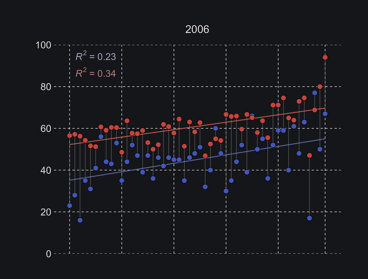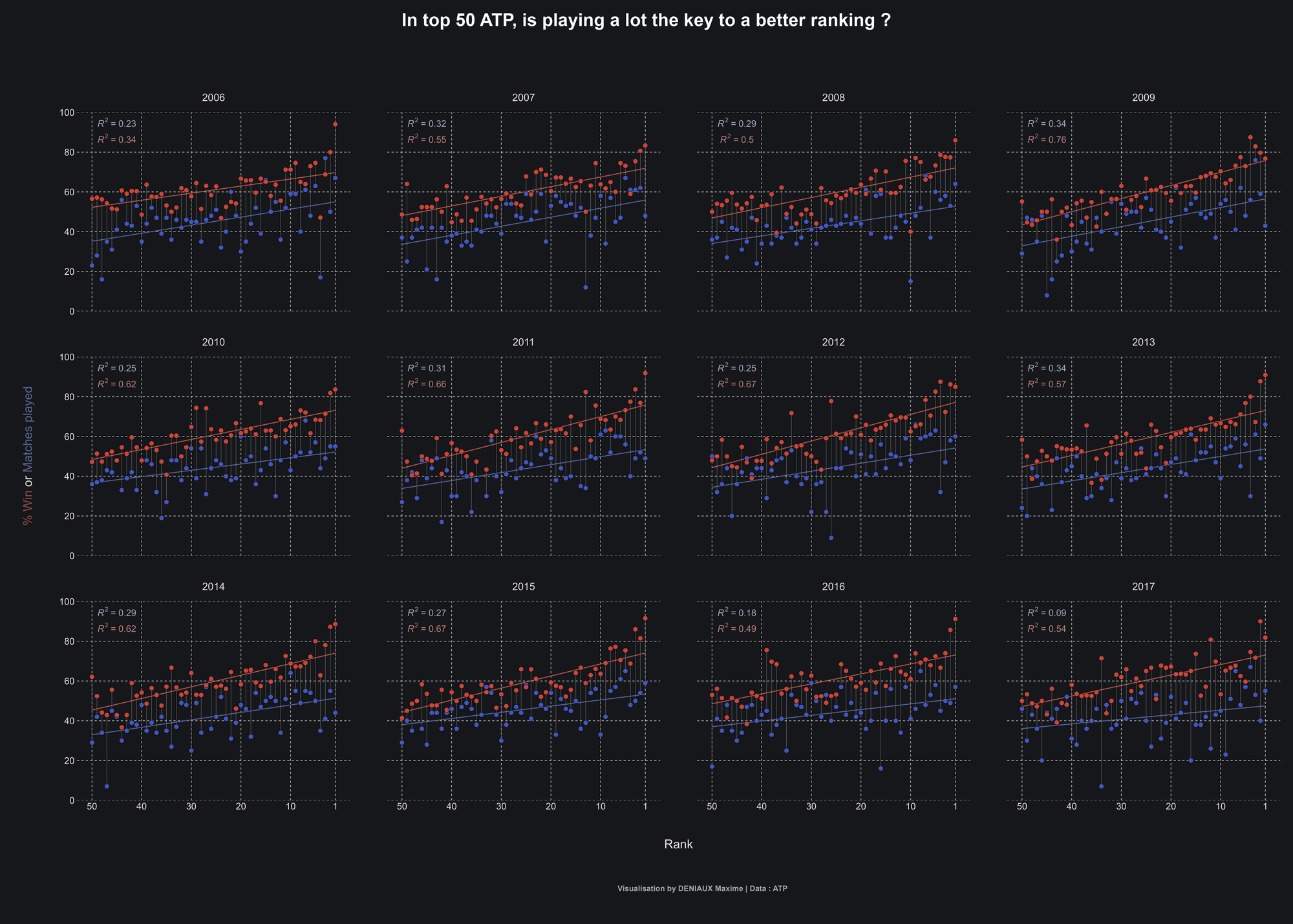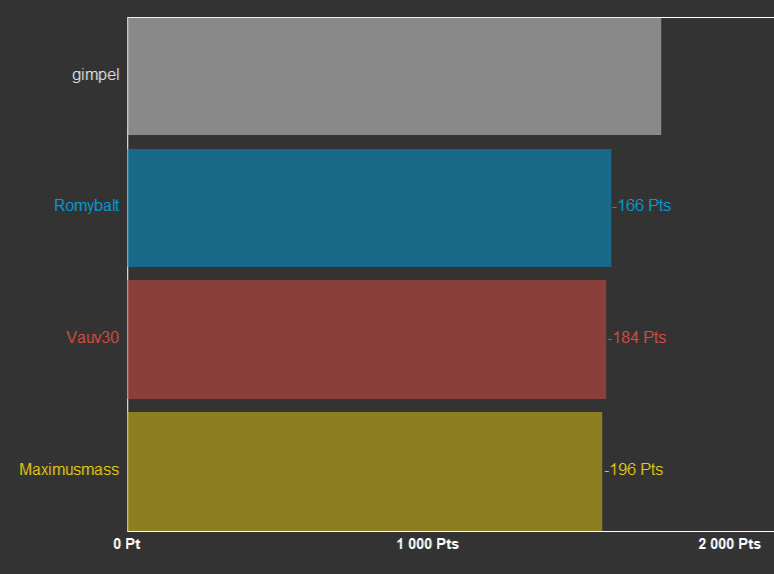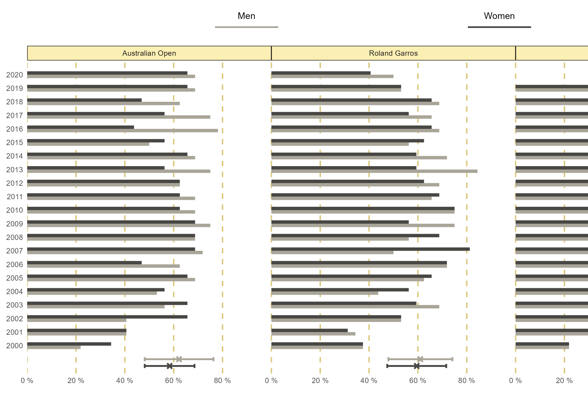Playing a lot means better ranking?

Hello,
Welcome to this sixth tennis post. For better visibility, I advise you to look at my posts on a computer (for the size but also because the colors differ on a phone that has a dark theme like me. If the theme is light, only the size makes it difficult to read).
Today, visualisation on the (non- ?) importance of the number of matches played in a season to climb the ranking in the top 50 ATP.
I had this question recently because tennis is done in a way that each tournament does not bring in the same number of points. And therefore, it does not appear at first glance necessary to play as many matches as possible to climb the rankings. It would be enough to play the highest point-scoring tournaments and perform well in them (for example, Novak Djokovic in 2023 who participated in only 18 tournaments in the year, which is not many, and who still finishes first in the rankings).
But tennis also has certain 'qualification' rules for participating in some tournaments. The ranking you have determines if you can enter directly into the main draw of the tournament or if you have to go through a qualifying draw (if you have the necessary ranking also for this draw...).
In the end, it is difficult to do like Novak Djokovic and select a small number of tournaments (among the most important; in fact he can do it too because he checks a special rule linked to his age and his number of matches in his career otherwise for well-ranked players, it is obligatory to participate in certain tournaments during the year) since it is necessary to have a very good ranking to be able to participate in these tournaments.
So, to try to answer this question, I decided to visualize between 2006 and 2017, the number of matches in the season and the percentage of victories of the top 50 at the end of the year (ATP 250 level tournaments or higher).

For people who don't know, the R2 criterion is called the coefficient of determination. It varies between 0 and 1 and determine to what extent one variable can explain another. The closer the criterion is to 1, the better the model is (for example, R2 = 1, then variable number 2 can perfectly explain the variations of variable number 1. On the graph, if R2 had been of 1 for the blue straight line, then we could have said that the ranking makes it possible to perfectly explain/predict the number of matches played, which is obviously not the case in reality).
On the contrary, we can clearly see that the blue R2 values are low regardless of the year. The values are very heterogeneous, and therefore being top 10 or 45th has no importance on the number of matches played (even if a slight positive trend seems to exist).
This is therefore the first lesson that we can draw, the number of matches does not seem to be the determining factor in obtaining a very good ranking.
We can then look at the winning percentage. And here we sometimes have very correct red R2 values, notably in 2009 with an R2 equal to 0.76 ! This year, we can say that the victory percentage was a real indicator for the ranking at the end of the year.
Finally, it depends on the year, but I would say that in general, the number of matches played does not seem to influence the final ranking obtained.
What seems to make the difference between very good players and "below" players is the winning percentage : that is to say the high level of consistency throughout the season.
Thanks for reading ! I hope it was clear and you liked it.
If you have any questions or remarks, I invite you to create an account (it's free) to write a comment, or simply to be notified of a new post in the future !
Below the github link button with the explanation of why the script is not available.
See you soon for new content 👋



Comments ()